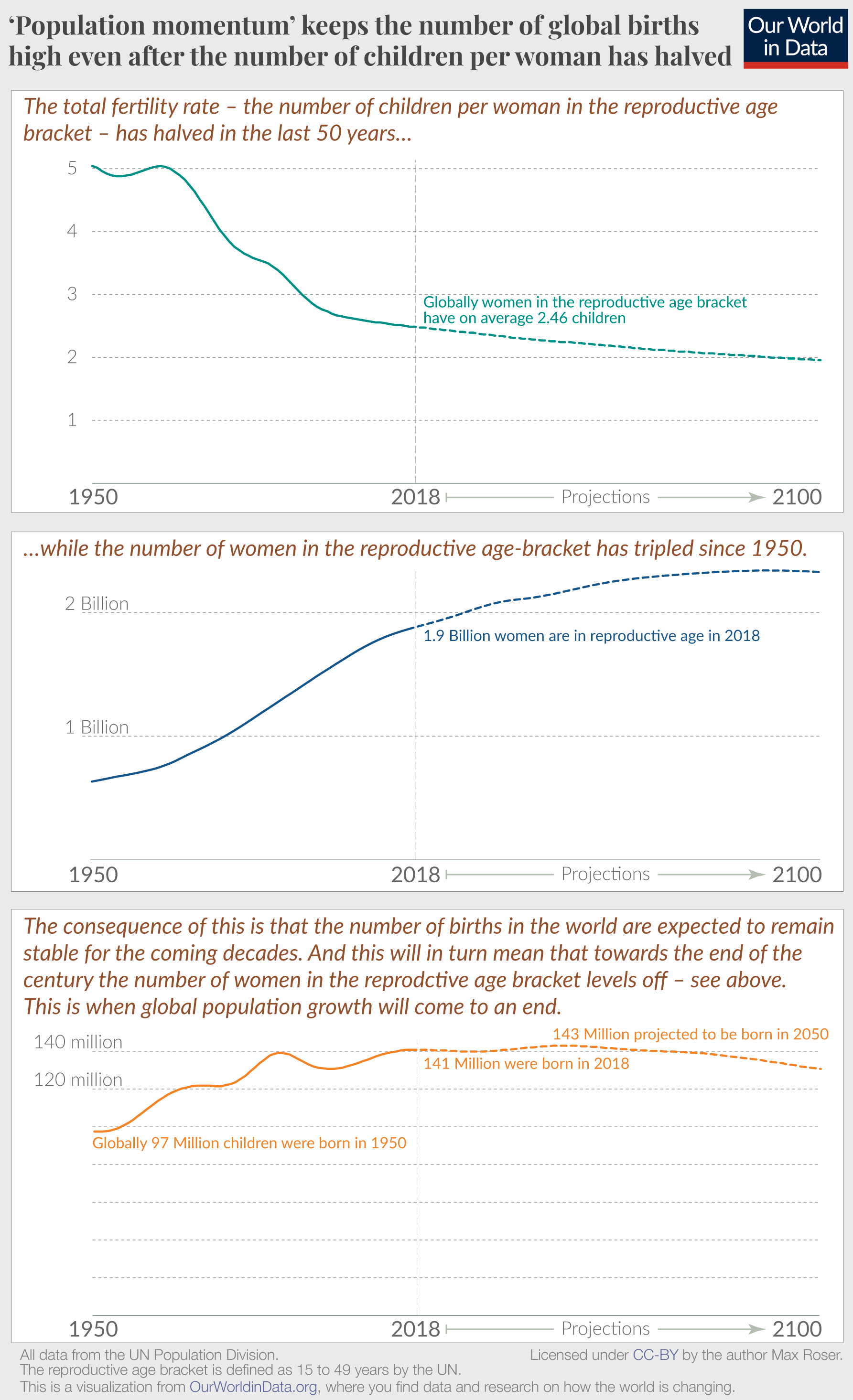In 1965 the average woman on the planet had 5 children. 50 years later this statistic – called the total fertility rate – has fallen to less than half. The first panel in this chart shows this fundamental change.
The total fertility rate at which a population replaces itself from one generation to the next is called the replacement fertility rate. If no children died before they grew up to have children themselves the replacement fertility rate would be 2. Because some children die, the global replacement fertility rate is currently 2.3 and therefore only slightly lower than the actual global fertility rate. Why then is global population growth not coming to an end yet?
The number of births per woman in the reproductive age bracket is only one of two drivers that matter here. The second one is the number of women in the reproductive age bracket.
If there were few women in the reproductive age bracket the number of births will be low even when the fertility rate is high. At times when an increasing share of women enter the reproductive age bracket the population can keep growing even if the fertility rate is falling. This is what demographers refer to as ‘population momentum’ and it explains why the number of children in the world will not decline as rapidly as the fertility rate.
The second chart in this panel shows that the population growth over the last decades resulted in increasingly larger cohorts of women in the reproductive age bracket. As a result, the number of births will stay high even as the number of births per woman is falling. This is what the bottom panel in the chart shows. According to the UN projections, the two drivers will cancel each other out so that the number of births will stay close to the current level for many decades.
The number of births is projected to change little over the course of this century. In the middle of the 21st century the number of births is projected to reach a peak at 143 million and then to decline slowly to 131 million births by 2100. The coming decades will be very different from the last. While the annual number of births increased by 43 million since 1950 we are now close to what the late Hans Rosling called “the age of peak child” – the moment in global demographic history at which the number of children in the world stops increasing. How close we are to peak child we looked at in a more detailed post.
Population momentum is one important driver for high population growth. But it of course also matters that all of us today live much longer than our ancestors just a few generations ago. Life expectancy is now twice as long in all world regions.
In all of this it is important to keep in mind that these are projections and how the future will actually play out will depend on what we are doing today.
Population momentum is driven by the increasingly large cohorts of women in the reproductive age bracket. It’s only when both the fertility rate and the number of women level off that population momentum stops. And this is when global population growth will come to an end. Hans Rosling explained it better than anyone, with the help of toilet rolls.
